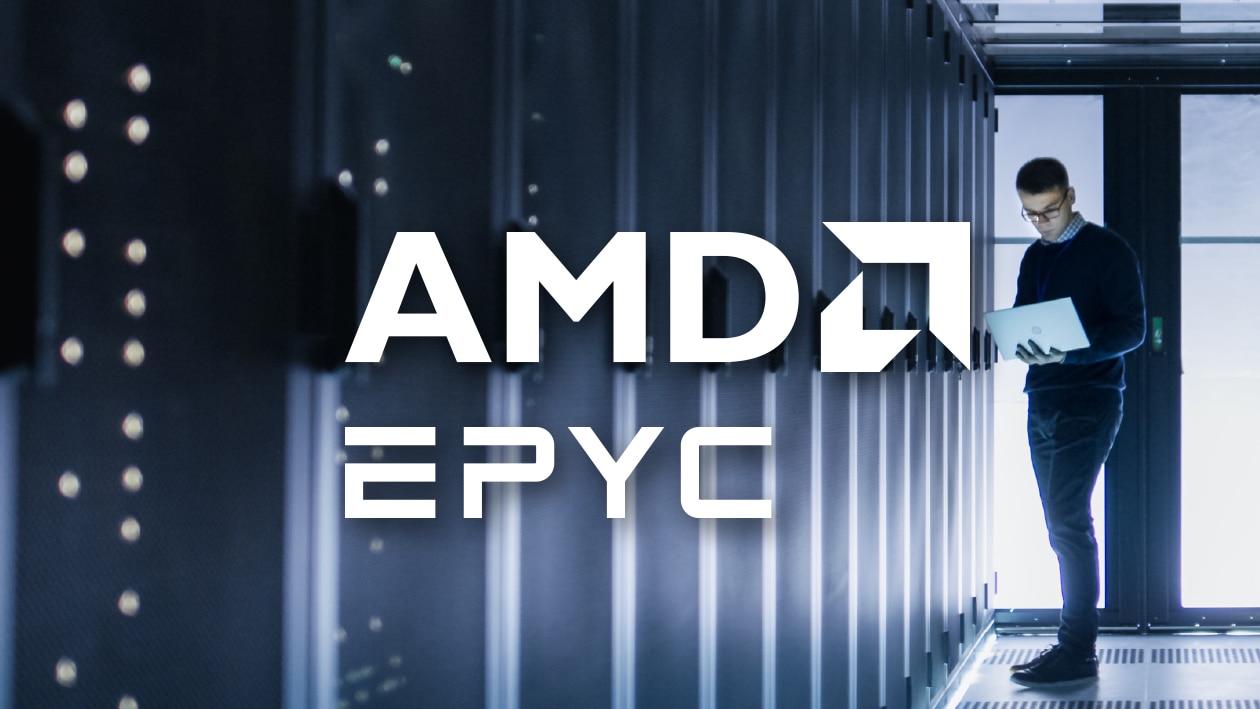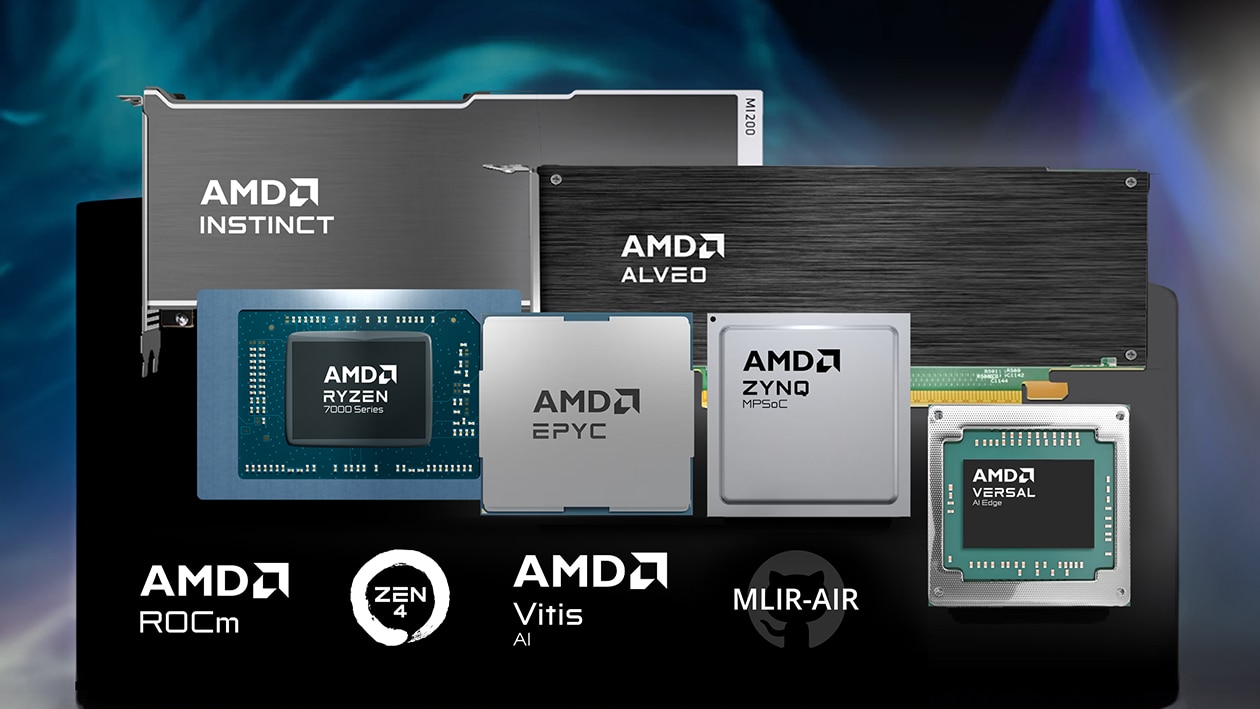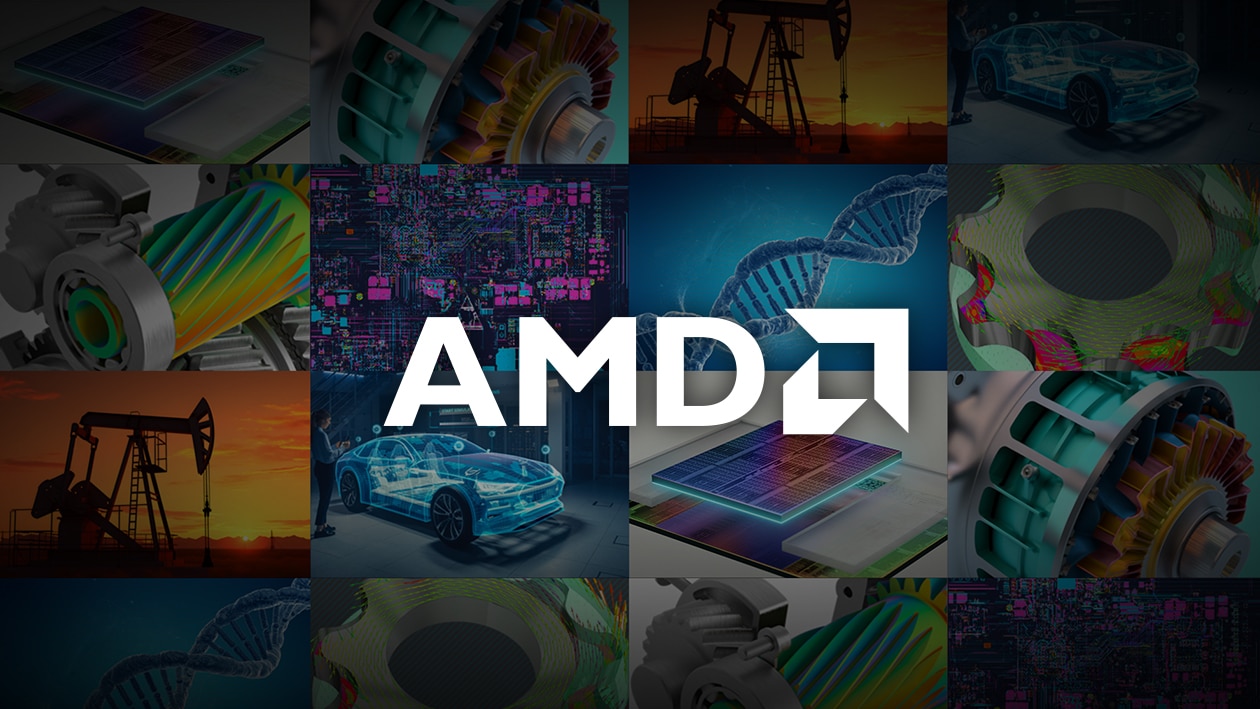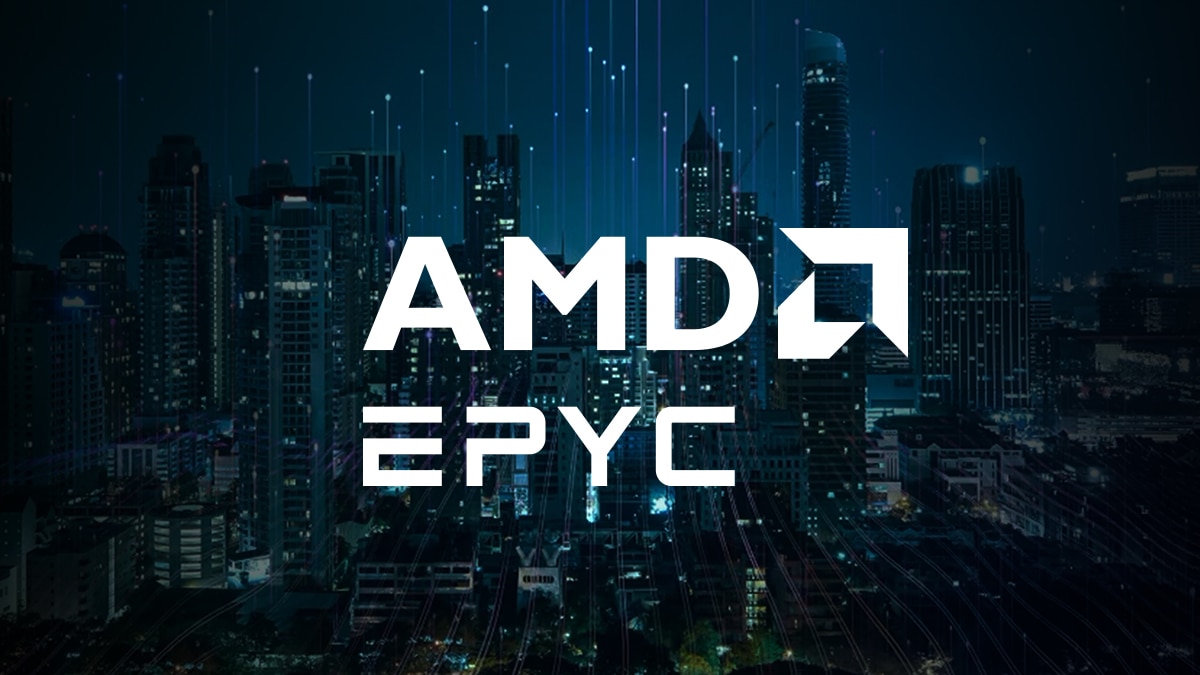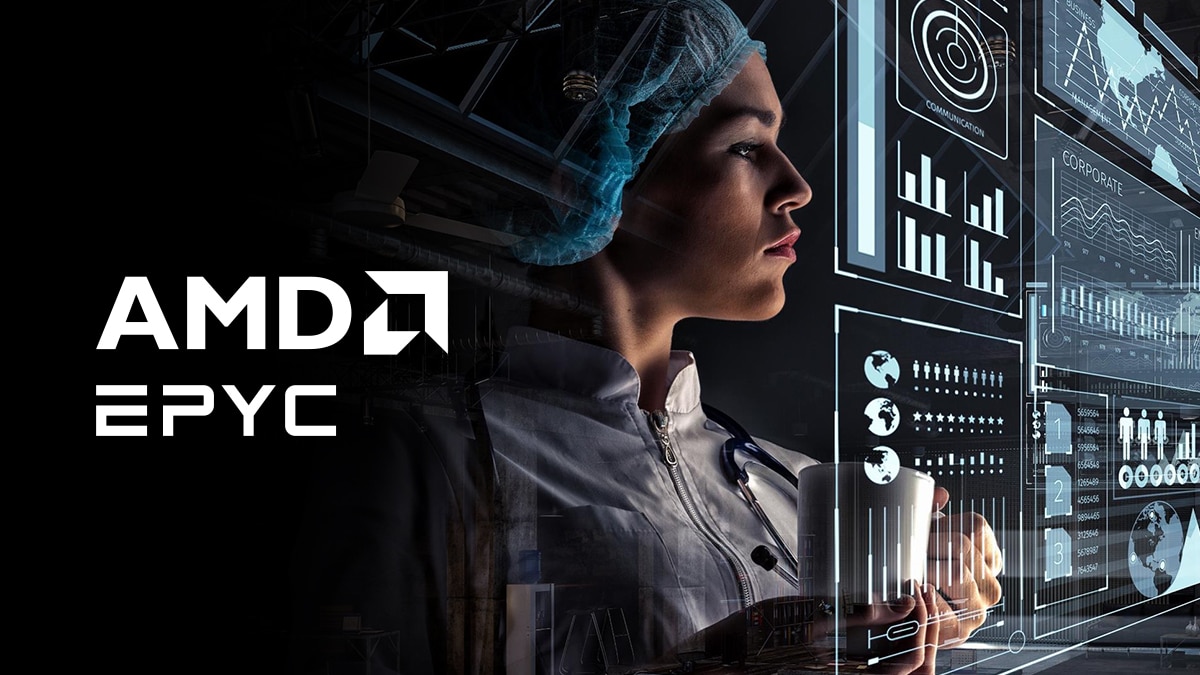By the Numbers: How Much Benefit Could New Servers Offer Your Customer?
Markets are changing. Industries are being upended by AI and new technologies that enable faster-than-ever data and analytics processing. Many of your customers may still be doing things the ‘old way’. Here is what that customer might look like, and how you can help introduce them to AMD technologies that transform their data workflows and evolve their productivity.
Meet ‘Bill’, CIO of ‘QRZ Computing’
Bill is a fictional CIO, but he represents a very common customer AMD serves. He is part of the senior leadership team tasked with ensuring his company remains competitive in his industry. That involves ensuring the hardware the company uses not only remains operational, but gives the business an edge, whether that’s over the previous year's output or competitors in the same space.
However, there’s a problem.
Bill’s fictional company is operating on legacy hardware purchased years ago. It’s been adequate for their needs up until recently, but with the advent of AI and data loads larger than ever, Bill and his team know time is running out for their infrastructure’s ability to support expanding workloads.
It’s already causing them problems.
Regular maintenance on their outdated systems is causing a significant financial burden, costing them a considerable amount each year. Inefficiencies and disruptions, including unplanned downtime are only exacerbating the problem.
Bill’s other challenge? Budgets are tighter. Currently, his team doesn’t have the capacity in either energy or space for new IT initiatives, and the wider executive team wants Bill to bring down costs. In fact, they want to reduce IT TCO significantly in the next three years, and the company is setting aggressive sustainability goals to reduce data center emissions.
Put simply, Bill is under pressure to modernize but is worried his budget won’t match the needs of the business. So, what’s the solution?
Solving Enterprise Problems: AMD EPYC™ Processors
AMD EPYC™ processors are trusted to run a third of servers worldwide.1 Offering up to 192 cores, 384 threads, and up to 5GHz Max Boost frequencies, the AMD family of server CPUs holds nothing back for customers like Bill.2 In fact, AMD EPYC CPUs can deliver for every level of business, from SMBs to enterprises.
Find a handy guide to the entire range of AMD EPYC CPU processors here: AMD EPYC™ Processor Overview.
Let’s look at what happens if hypothetical Bill upgrades QRZ Computing company to cutting-edge AMD hardware:
Performance: Upgrading from aging infrastructure to a CPU with hundreds of cores and AI-ready performance meant that Bill and his team could now provide the company with more real-world performance across their data workflows, all while consuming considerably less power than the older hardware the company was using previously.
Efficiency: With higher core counts and clock speeds, Bill was concerned that energy costs of his new server infrastructure were bound to increase.
However, the efficiency and performance of these new servers allowed Bill’s team to spend less on maintenance and upkeep, further reducing their company’s IT expenses. For example, had his team replaced its legacy 2x Intel 8280-based servers to servers advanced by 2x AMD EPYC™ 9965 CPUs to deliver 391,000,000 units of integer performance, they could have reduced their overall server footprint by roughly 10 percent, reclaiming office space for other IT initiatives. And with reduced rack space, this move would also have saved an estimated ~7740963 metric tons of CO2 equivalents - the emissions avoided equivalent to 3096385.02 acres of USA forests annually.3
Budget: One of Bill’s primary concerns was cost. Modern solutions often don’t come cheap, and that’s before the ongoing costs kick in.
Fortunately, with AMD EPYC™ CPUs focused on performance and efficiency, Bill was able to increase output while reducing the number of servers his company relied on, giving Bill and his team a win for their company finances. For instance, had they been using 2x Intel 8280-based servers, two years ago, their throughput SPEC®2017 integer base performance score would have been 391, and required one million of these dual-socket 5-year-old servers to achieve a performance target of 391,000,000 integer score. Today, it takes just an estimated 133,334 servers advanced by 2x AMD EPYC 9965 CPUs to achieve the same level of performance.3
Making the Switch: With broad ecosystem support and seamless integration with existing x86 infrastructure, Bill was able to enjoy a worry-free migration to the new hardware, avoiding lengthy downtime or compatibility issues when making the switch.
The Future: While Bill and his team focused on the here and now, opting for AMD EPYC processors also helped them prepare for future challenges. Offering incredible scalability, servers advanced by AMD EPYC CPUs enable Bill with the flexibility of right-size compute power to address shifting workloads and applications.
Introduce AMD EPYC™ Processors to Your Customers
Bill and his company are fictional, but they represent challenges facing very real customers. There are a variety of AMD EPYC processors available that not only help solve the challenges enterprises face today, they also help address those that customers will face tomorrow.
Introduce AMD EPYC CPUs to your customers and help them get ready for an era where data, analytics, and AI are data center essentials. Learn more about AMD EPYC processors at amd.com, or contact your AMD representative.
AMD Arena
Enhance your AMD product knowledge with training on AMD Ryzen™ PRO, AMD EPYC™, AMD Instinct™, and more.
Subscribe
Get monthly updates on AMD’s latest products, training resources, and Meet the Experts webinars.

Related Articles
Related Training Courses
Related Webinars
Footnotes
Please note that any persons or businesses in this article are purely fictitious and do not represent or reflect any real persons or business.
Source: Mercury Research Sell-in Revenue Shipment Estimates, 2023 Q4
EPYC-018: Max boost for AMD EPYC processors is the maximum frequency achievable by any single core on the processor under normal operating conditions for server systems.
9xx5TCO-003A - This scenario contains many assumptions and estimates and, while based on AMD internal research and best approximations, should be considered an example for information purposes only, and not used as a basis for decision making over actual testing. The AMD Server & Greenhouse Gas Emissions TCO (total cost of ownership) Estimator Tool - version 1.12, compares the selected AMD EPYC™ and Intel® Xeon® CPU based server solutions required to deliver a TOTAL_PERFORMANCE of 391000000 units of SPECrate®2017_int_base performance as of October 10, 2024. This estimation compares a legacy 2P Intel Xeon 28 core Platinum_8280 based server with a score of 391 versus 2P EPYC 9965 (192C) powered server with an score of 3000 (https://www.spec.org/cpu2017/results/res2024q4/cpu2017-20240923-44837.pdf) along with a comparison upgrade to a 2P Intel Xeon Platinum 8592+ (64C) based server with a score of 1130 (https://spec.org/cpu2017/results/res2024q3/cpu2017-20240701-43948.pdf). Actual SPECrate®2017_int_base score for 2P EPYC 9965 will vary based on OEM publications.
Environmental impact estimates made leveraging this data, using the Country / Region specific electricity factors from the 2024 International Country Specific Electricity Factors 10 – July 2024', and the United States Environmental Protection Agency 'Greenhouse Gas Equivalencies Calculator'.
For additional details, see https://www.amd.com/en/legal/claims/epyc.html#q=SP9xxTCO-003A
Please note that any persons or businesses in this article are purely fictitious and do not represent or reflect any real persons or business.
Source: Mercury Research Sell-in Revenue Shipment Estimates, 2023 Q4
EPYC-018: Max boost for AMD EPYC processors is the maximum frequency achievable by any single core on the processor under normal operating conditions for server systems.
9xx5TCO-003A - This scenario contains many assumptions and estimates and, while based on AMD internal research and best approximations, should be considered an example for information purposes only, and not used as a basis for decision making over actual testing. The AMD Server & Greenhouse Gas Emissions TCO (total cost of ownership) Estimator Tool - version 1.12, compares the selected AMD EPYC™ and Intel® Xeon® CPU based server solutions required to deliver a TOTAL_PERFORMANCE of 391000000 units of SPECrate®2017_int_base performance as of October 10, 2024. This estimation compares a legacy 2P Intel Xeon 28 core Platinum_8280 based server with a score of 391 versus 2P EPYC 9965 (192C) powered server with an score of 3000 (https://www.spec.org/cpu2017/results/res2024q4/cpu2017-20240923-44837.pdf) along with a comparison upgrade to a 2P Intel Xeon Platinum 8592+ (64C) based server with a score of 1130 (https://spec.org/cpu2017/results/res2024q3/cpu2017-20240701-43948.pdf). Actual SPECrate®2017_int_base score for 2P EPYC 9965 will vary based on OEM publications.
Environmental impact estimates made leveraging this data, using the Country / Region specific electricity factors from the 2024 International Country Specific Electricity Factors 10 – July 2024', and the United States Environmental Protection Agency 'Greenhouse Gas Equivalencies Calculator'.
For additional details, see https://www.amd.com/en/legal/claims/epyc.html#q=SP9xxTCO-003A


